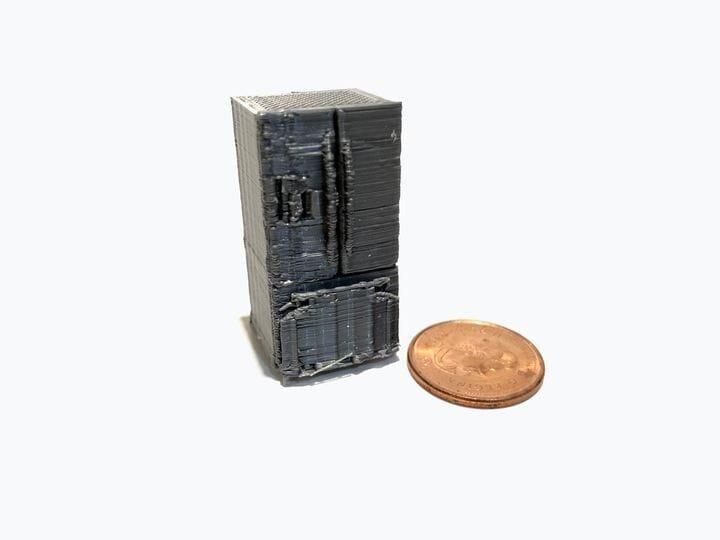![GE’s appliance pages seem to offer downloads of 3D models [Source: Fabbaloo]](https://fabbaloo.com/wp-content/uploads/2020/05/ge-fridge-page_img_5eb08caed8333.jpg)
I found a 3D model in an unexpected place this week, and it got me thinking about possible applications.
Where did I find this 3D model? I happened to be browsing for an owner’s manual for an kitchen appliance on the GE site, and indeed found the manual. But then I noticed those words at the bottom of the entry for this particular refrigerator: “3D CAD – Download”.
This piqued my interest and I downloaded the “3D CAD” model, which turned out to be a .DXF format file. .DXF is a format used by AutoCAD and can represent both 2D and 3D models.
GE Appliance 3D Models
It seems that GE has, at least for many of their refrigerator products, included a downloadable 3D CAD model similar to the one I encountered. I poked around and found 3D CAD downloads for virtually ever appliance I inspected, usually under the “Service and Support” tab.
![The downloaded 3D model of a GE refrigerator [Source: Fabbaloo]](https://fabbaloo.com/wp-content/uploads/2020/05/image-asset_img_5eb08caf1ddba.jpg)
This is quite a feat by GE, making all of the CAD models of their major products available online for free download by anyone. These CAD models do not really give away any state secrets, however, as they are really just a representation of the exterior skin of the item, and not any of the internal mechanics.
Appliance 3D Model Applications
You can’t then attempt to rebuild the appliance as if it’s an open source project. But what you can do is use the 3D model in other ways. It could, for example, be used in interior design exercises, where placement of the appliance can be tested. Similarly, the surrounding cabinets can be designed around the appliance to ensure there are no surprises when the appliance is installed in reality.
It would also be possible to 3D print the appliance for use in a miniature physical representation of a floor layout. In this way a display of perfectly scaled appliances could be easily made.
3D Printing a Fridge
I attempted to do this by 3D printing the appliance 3D model I encountered. But the first issue was that .DXF format is not particularly well-accepted by common 3D print management software. I had to convert it to another more suitable format, like .3FM or (ugh) .STL.
It’s a bit tricky to perform this type of conversion because you should have access to a powerful CAD software tool that can import .DXF and export in a more usable format. AutoCAD can do this, of course, but not everyone has that particular tool. I tried using Autodesk Fusion 360, but for some reason the .DXF model could be imported but not exported.
I ended up using Rhinoceros, another popular 3D modeling tool to import the .DXF and export as .STL. The resulting .STL model is not particularly correct, but it can be easily repaired with your favorite .STL repair tool.
Here you can see the result of my quick 3D print of the refrigerator. It could be a better 3D print, but I chose the size poorly; it would be better if a larger size.
![Lousy attempt at 3D printing the GE fridge 3D model, which was too small [Source: Fabbaloo]](https://fabbaloo.com/wp-content/uploads/2020/05/image-asset_img_5eb08caf52a91.jpg)
I’m quite pleased that GE decided to make these 3D models available to the public, and indeed there seems to be an enormous number of them, if they provide them for most of their products.
If every manufacturer did this, it would provide a far easier means to develop interior design layouts.
In the meantime, you might try 3D printing your own appliances, if they happen to be from GE.
Via GE

